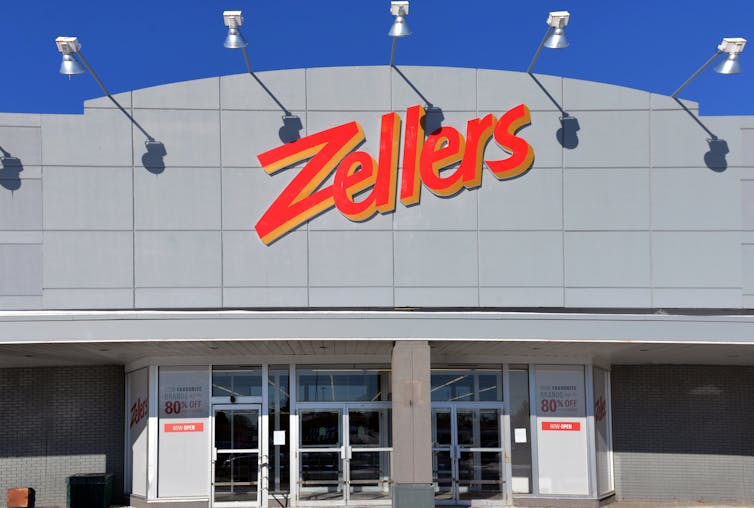
Twitter has long been known for its iconic Blue Bird. On July 23, Elon Musk announced that this famed logo was going to be replaced with an “X.” After a series of Musk-driven blunders, the disappearance of the Blue Bird has been seen by some as the final straw in the erasure of Twitter as we know it.
It also serves as a reminder that, despite the meaningful role many logos play in our cultural life, there is someone behind the curtain, pulling the strings.
Among the speculation as to why Musk has decided to rebrand Twitter, one thing is certain: the Blue Bird is gone. As this iconic logo disappears from public life — along with “tweets” and the Twitter name itself — some are left mourning the loss of a brand that impacted the online social fabric for over a decade.
Evolving relationships
The ways in which consumers relate to brands is evolving. Brands not only advertise on Instagram and TikTok, but they also have their own profiles. Brands digitally appear alongside friends, colleagues and politicians. We can text brands for customer service help on WhatsApp alongside family chat groups.
We now interact with brands in an emotional and relational way. This is part of a larger trend of brands becoming anthropomorphized.
Consumers relate to brands in ways that exceed the bounds of an economic, transactional relationship. Brands arouse emotions in us. Nostalgia is now the driving force behind reviving former brands — as the recent revival of Canadian discount brand Zellers is proving.

Emotional connections
Our emotions are being leveraged by companies in deliberate and explicit ways. As consumers we understand the social capital and value of branding.
To mourn the loss of a logo and brand is noteworthy. Despite any feelings we have about Twitter’s former brand, this disappearance reminds us that a brand’s use — and existence — is ultimately outside our control.
This is not to say our collective thoughts and feelings about logos do not matter at all. In fact, public pressure has been the driver in some companies rebranding and evolving their logos, particularly racist ones.
Controlled trademarks
Logos are trademarks, and as such, they are objects of private property, controlled and owned by corporations as assets. Although trademarks are the perceptible form of a brand, logos only have value because we, as consumers, recognize them. We rely on trademarks in the market to decide what to buy, and what brands to trust.
Read more: Why do some brands change racist names and logos, but others don't? Here's what the research says
In our reliance on brands, and in forming communities around them, we contribute to their value. Yet, in many ways, in the trademark law landscape, we are tourists.
Trademarks constitute an essential aspect of a brand, and the value of today’s leading brands is in the billions. For example, Canadian brands Bell and TD Bank are worth $11.05 billion and $27.54 billion respectively. These astronomical values pale in comparison to the value of global brands; Amazon’s brand in 2022 was worth US$705.65 billion.
Brands as properties
There is no doubt that trademarks, as the face of brands, are precious to their owners. They are also meaningful to members of the public in various ways, sometimes forming the face of social movements or reflecting our identities, but ways in which we can make use of trademarks is limited.
Using someone else’s trademark without their permission infringes their rights to their logo. While there are exceptions to this protection, they are narrow.
For instance, parody and satire are not defences to trademark infringement in Canadian law. Using a company’s logo for cultural criticism and political protest may violate the trademark owner’s rights.
This gives companies legal means to threaten those using their logo in the course of protest or critique — such as employees looking to organize a union or unhappy customers who create a “gripe site.”
There are many reasons for this, but a common thread that permeates Canadian law is understanding trademarks as a form of private property. Just as protesting on someone’s front lawn would be trespassing, protesting with a logo is infringement.
Protecting logos in this way fails to appreciate the social roles they have, and the roles consumers play in developing their meaning.
Collective meanings
Logos are not merely commercial assets. They have value that extends far beyond their owners. Logos are a collective site of meaning and protecting them as mere commercial assets may effectively shield trademark owners from public discourse.
As we say goodbye to one of the most iconic logos of the last decade, it is worth pausing to ask what exactly we have lost. As consumers, we sit on the sidelines of trademark protection. As Twitter — erm, X — changes, for better or worse, perhaps it is time our trademark laws change as well.
Alexandra Mogyoros receives funding from the Social Sciences and Humanities Research Council through a SSHRC Explore Grant.
This article was originally published on The Conversation. Read the original article.







